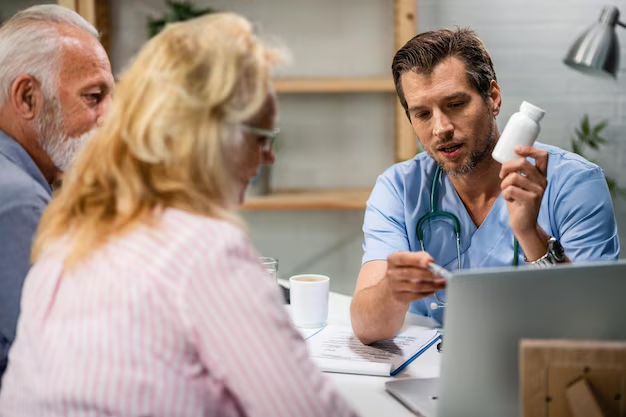Understanding Scoliosis: Is It Really in Your Genes?
If you’ve ever looked at someone’s back and noticed a slight curve where there shouldn’t be one, or perhaps experienced back pain that prompted a medical visit, you might have encountered the concept of scoliosis. For those diagnosed or familiar with someone who has it, a pressing question often arises: Is scoliosis genetic? Let’s delve into the intricacies of this condition, exploring genetic factors, environmental influences, and everything in between to give you a comprehensive understanding.
What Exactly is Scoliosis?
At its core, scoliosis is a condition characterized by an abnormal curvature of the spine. While a typical spine has gentle curves, those with scoliosis have a spine that twists and curves to the side. The most common form, adolescent idiopathic scoliosis, usually appears just before puberty.
Types of Scoliosis
Understanding scoliosis involves recognizing its various forms, including:
- Idiopathic Scoliosis: This is the most common type, especially among adolescents. Its exact cause remains unknown.
- Congenital Scoliosis: Arises due to a malformation of the spine during fetal development.
- Neuromuscular Scoliosis: Emerges due to nerve or muscle abnormalities, often seen in conditions like cerebral palsy.
- Degenerative Scoliosis: Occurs in adults, often resulting from disc degeneration or arthritis.
Is Scoliosis Genetic? Exploring the Hereditary Angle
A frequently asked query is: "Is scoliosis inherited?". The answer is nuanced. Research suggests a genetic component, particularly with idiopathic scoliosis, but it’s not purely hereditary. Several factors play a crucial role:
Genetic Research and Findings
- Family History: There’s a higher likelihood of scoliosis if a family member has the condition, highlighting a hereditary aspect.
- Genes Identified: Studies have pinpointed several genes associated with scoliosis, though they only account for a portion of cases. Genes such as CHD7 and MATN1 have been linked to spinal development.
- Twin Studies: These suggest a genetic component, as identical twins have shown a higher concordance rate for scoliosis compared to fraternal twins.
The Role of Genetic Testing
Currently, genetic testing for scoliosis is not standard practice due to its complex nature and the limited understanding of all genetic contributions. However, research continues to evolve, promising enhanced diagnostic tools in the future.
Beyond Genetics: Environmental and Lifestyle Factors
While genetics plays a role, it's not the sole factor. Understanding scoliosis fully requires a look at environmental and lifestyle aspects:
Environmental Influences
- Posture and Physical Activity: While poor posture doesn’t cause scoliosis, maintaining an active lifestyle can help manage symptoms.
- Nutrition: Adequate calcium and vitamin D intake can promote skeletal health, though they don’t prevent scoliosis directly.
Psychological and Social Factors
- Emotional Impact: Adolescents, especially, might experience self-esteem issues due to the physical manifestation of scoliosis.
- Support Systems: A solid support network can be pivotal in managing psychological impacts, underscoring the importance of empathy and understanding from family and peers.
Diagnosing Scoliosis: What to Expect
For someone suspecting scoliosis, knowing what to expect during diagnosis can be relieving:
Medical Evaluation
- Physical Examination: Doctors often start with the Adam’s Forward Bend Test to check for spinal curvature.
- Imaging Tests: X-rays are the gold standard for diagnosing scoliosis, offering a clear picture of the spine’s angle and degree of curvature.
The Role of Specialists
Orthopedic doctors and physiotherapists play crucial roles. Advanced cases might require consultations with orthopedic surgeons to explore treatment options.
Treatment Approaches: Managing Scoliosis
When it comes to treatment, the approach depends on several factors, such as age, degree of curvature, and lifestyle:
Non-Surgical Options
- Bracing: For growing adolescents, bracing can prevent further curvature if the spinal curve falls between 25 and 40 degrees.
- Physical Therapy: Customized exercises can help improve flexibility, posture, and muscle strength.
Surgical Interventions
In severe cases, surgery might be advised to correct or halt the progression of spinal curvature. Spinal fusion is a common procedure, often recommended for curvatures exceeding 45-50 degrees.
Living with Scoliosis: Lifestyle Adjustments and Tips
Understanding that scoliosis isn't the end of the road, many continue to lead normal, active lives with a few adjustments:
Tips for Daily Living
- Ergonomics Matter: Invest in ergonomic furniture to support proper posture.
- Regular Exercise: Engage in lower-impact activities, such as swimming or yoga, to stay active without overexerting the spine.
Emotional and Mental Wellness
Maintaining a positive outlook is vital. Engaging in support groups or talking to a counselor can provide immense emotional relief and practical solutions.
Key Takeaways and Practical Tips
In summary, scoliosis is a complex condition with genetic, environmental, and psychological elements. Here’s what you can keep in mind:
- 👨👩👧 Family History Matters: If scoliosis runs in your family, stay vigilant with regular check-ups.
- 🔍 Early Detection is Crucial: Regular screenings during adolescence can catch scoliosis early.
- ⚖️ Balanced Lifestyle is Key: Exercise and nutrition play a supportive role in managing symptoms.
- 🧠 Mental Health Supports Physical Health: Address the emotional aspects to improve overall quality of life.
- 😉 Stay Informed and Proactive: Knowledge is power; understanding the condition empowers better management.
Scoliosis, despite its challenges, is a manageable condition. With informed decisions and attentive care, those affected can lead fulfilling lives. Always consult healthcare professionals if you suspect scoliosis for a thorough evaluation and tailor-made advice.
